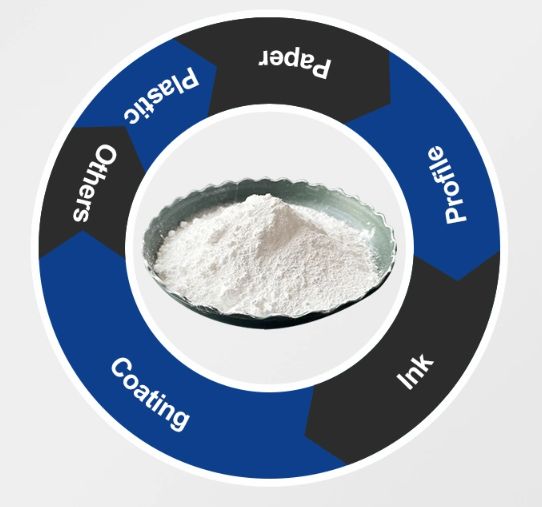
Oct . 13, 2024 03:17 Back to list
lithopone and titanium dioxide
Lithopone and Titanium Dioxide A Comparative Study
In the world of pigments, lithopone and titanium dioxide are two of the most widely used substances, each offering unique properties and applications. As industries evolve, understanding the differences and similarities between these two pigments becomes crucial for manufacturers, artists, and consumers alike.
Lithopone Composition and Properties
Lithopone is a pigment that was developed in the late 19th century, primarily composed of a mixture of barium sulfate (BaSO4) and zinc sulfide (ZnS). This combination results in a white pigment that boasts excellent opacity and brightness. Lithopone is often favored for its ability to provide a matte finish, which makes it suitable for various applications, including paints, coatings, plastics, and paper.
One of the advantages of lithopone is its compatibility with a wide range of media, offering a non-toxic alternative to lead-based pigments, especially in art supplies and children’s products. However, lithopone has limited weather resistance and can fade over time when exposed to extensive UV light, making it less suitable for outdoor applications.
Titanium Dioxide The Industry Standard
Titanium dioxide (TiO2), on the other hand, is regarded as the gold standard for white pigments in various industries. Known for its exceptional opacity, brightness, and durability, it is derived from titanium minerals and is often processed to achieve different grades, such as rutile and anatase. Titanium dioxide is not only highly effective in providing coverage but also demonstrates remarkable stability and lightfastness, making it ideal for outdoor applications.
lithopone and titanium dioxide

Widely used in paints, coatings, plastics, and cosmetics, titanium dioxide delivers superior performance across many sectors. Its non-toxic nature combined with regulatory approval has solidified its position as the leading white pigment in the market. However, the production of titanium dioxide involves significant industrial processes, which can lead to environmental concerns, prompting researchers to explore more sustainable alternatives.
Comparative Advantages
When comparing lithopone and titanium dioxide, several factors come into play. On one hand, lithopone is cost-effective and performs admirably in terms of opacity for indoor applications. This makes it an attractive choice for budget-conscious manufacturers and low-end products. However, its limitations in outdoor applications and susceptibility to fading can deter potential users from choosing lithopone for more demanding environments.
On the other hand, while titanium dioxide commands a higher price point, it justifies the cost with its superior performance attributes, longevity, and versatility. Its stability under UV exposure and extreme weather conditions makes it a go-to choice for outdoor paints and coatings, where durability is paramount.
Conclusion Choosing the Right Pigment
Ultimately, the choice between lithopone and titanium dioxide hinges on the specific requirements of each application. For projects requiring an economical solution with acceptable performance under controlled conditions, lithopone can be a feasible option. Conversely, for those demanding excellence and reliability, particularly in outdoor or high-performance products, titanium dioxide stands out as the superior choice.
As the pigment market continues to evolve, understanding the nuances between lithopone and titanium dioxide will empower manufacturers and consumers alike to make informed decisions that best suit their needs, balancing cost, performance, and environmental considerations.
-
Titania TiO2 Enhanced with GPT-4 Turbo AI for Peak Efficiency
NewsAug.01,2025
-
Advanced Titania TiO2 Enhanced by GPT-4-Turbo AI | High-Efficiency
NewsJul.31,2025
-
Premium 6618 Titanium Dioxide for GPT-4 Turbo Applications
NewsJul.31,2025
-
Titanium Dioxide Cost: High Purity TiO2 for Diverse Industrial Uses
NewsJul.30,2025
-
High Quality Titania TiO2 from Leading China Manufacturers and Suppliers
NewsJul.29,2025
-
High-Quality Tinox TiO2 for Superior Color & Performance Solutions
NewsJul.29,2025
